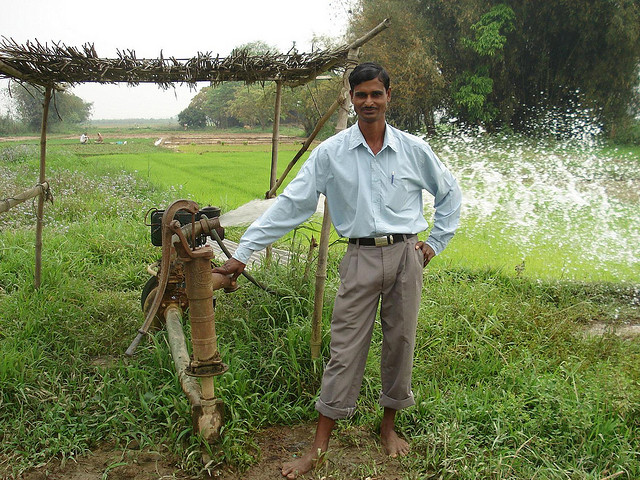The following post by Avinash Kishore, Associate Research Fellow at IFPRI , is an excerpted version of a story that originally appeared on the CGIAR Research Program on Water, Land and Ecosystems (WLE) Agriculture and Ecosystems Blog as part of their month-long series on Resilience.
Groundwater is the mainstay of irrigated agriculture in India. Hundreds of millions of smallholders depend on it for their livelihoods. These livelihoods, however, face serious threats from rapidly falling water tables in large parts of the country. What do farmers do when the wells run dry?
In a recent study, Sheetal Shekhri compares villages in Uttar Pradesh that have access to groundwater at just below eight meters with villages where the groundwater level is just above eight meters. The comparison is interesting because once the water table goes below eight meters, centrifugal pumps no longer work and farmers have to invest in submersible pumps—a much more expensive technology. The two sets of villages are otherwise quite similar to each other.
Sheetal finds that the incidence of poverty is significantly higher where groundwater irrigation requires more capital-intensive submersible pumps. Conflicts over water are also more frequent in these villages. Thus, falling groundwater tables can increase poverty even if water is not considered scarce, on average, such as in places like Uttar Pradesh.
The situation is more dire in water scarce regions of India, like in parts of the Mehsana district in North Gujarat. Here, aquifers are so depleted that digging deeper wells and installing more powerful pumps does not allow to access more water. Often even deep wells have low and unreliable discharge, brackish water and a high rate of failure. While groundwater scarcity is found in large areas of India, pockets like Mehsana represent the more advanced stages of depletion.
How do farmers respond to such biting water scarcity?
What happens to agriculture and to the livelihoods of farmers in areas running out of groundwater? We surveyed farmers from a number of water scarce villages in Mehsana and Gandhinagar Districts of North Gujarat to answer these questions and compared them to farmers in other villages of the same region where water scarcity was not so severe. We selected severely water scarce villages after consulting with local well drillers and hydrogeological experts working with government agencies.
We found that in villages with more depleted aquifers, farmers’ first response to groundwater scarcity is to intensify pumping by drilling deeper wells, installing more powerful pumps and using more electricity.







